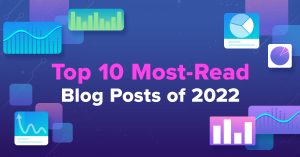The JavaScript Developer is a series of interviews with JS developers where they share their stories, inspirations and life lessons. This is the fifth and the concluding part of the series.

Cathy Lill is a front end developer and JavaScript specialist, currently working at NICTA on an open source WebRTC framework called rtc.io. Prior to joining NICTA, she worked on the Canvas template builder at Campaign Monitor.
Over the years, she has taught JavaScript, HTML and CSS development with community organizations like Girl Develop It and has given talks at SydJS, Web Directions Respond, Sydney Web Apps Group and Girl Geek Dinners. She is passionate about encouraging and mentoring aspiring developers to create cool stuff on the web.
Here are the excerpts from the interview:
Table of Contents
Tell us something about yourself
I live in Sydney, Australia. We are really lucky here to have such a great community around tech and web development. Our local JavaScript meetup SydJS just had its 4th birthday and it’s always been a fantastic and welcoming place to talk and hang out with other developers. I did a talk of my own a few months ago – a demo of a guitar effects unit built with the HTML5 Audio API. I have also done talks for the local Girl Geek Dinners meetup, helped out at SydCSS meetup and taught some classes with Girl Develop It and General Assembly. Local meetups are a great way to keep in touch with what’s going on locally and in the wider world of tech, they are also a great place to hone your public speaking skills.
A line or two about the current project you are working on.
I just recently finished working on the newly launched Canvas email template builder for Campaign Monitor. I’m currently working at NICTA on an open source WebRTC framework called rtc.io. It is a collection of JavaScript charts modules to help developers build apps for peer to peer video, audio and data communication.
What made you choose programming as a profession?
I don’t think it was so much programming that I chose, but building the World Wide Web. When I started out, the idea that anyone could create a web page and publish it instantly to the whole world represented a huge shift in how people could communicate and share information. All you need is a computer, a text editor and an internet connection, and you can build practically anything!
Tell us something about the first project you worked on: what was it, how you went about figuring it out, the obstacles you faced, the outcome, etc.
The first proper website I made was for the rock band I was in at University. We spent all day taking this cool panorama shot of the band for it, which our drummer stitched together manually in Photoshop. This was maybe 1999 – there was no such thing as photo stitching software back then and it took forever to get the photos right!
What would be top 3 resources that you would recommend beginners-level JavaScript programmers to learn advanced stuff about JavaScript?
Don’t be afraid to dive into the W3C and ECMA specs, everything you need to know is there. Tutorials are not always accurate or up to date so it’s a good habit to refer the specs regularly. Mozilla Developer Network is also an invaluable resource that I use almost every day.
If there is something you would like to say to fellow programmers to inspire them to code in JavaScript, what would it be?
JavaScript is the key to doing all the coolest stuff with the web and building the web is a great career. You get to be creative, solve challenging technical puzzles and work with lovely people.
What is the biggest criticism you have faced till date?
I can’t think of one big criticism but I do think it’s important to be open to day to day criticisms and alternative ideas. Web developers are usually passionate about what they do and opinionated about how they do it, but putting effort into working collaboratively produces better quality software and is ultimately so much more rewarding.
What is the biggest compliment you have got till date?
My product manager at a previous company, once said “You changed the way we do things here for the better.” Having worked at some big companies where you sometimes feel like a small cog in a big machine, it was really cool to have made a positive impact not just on the technical process but the quality of the product.
What do you do when you are not writing codes?
Mountain biking and Netflix, not necessarily in that order.


That’s me 🙂 !
3 Apps you cannot do without and why?
I’m still amazed by the GPS and mapping capabilities we carry around in our smartphones. It’s so commonplace now it’s barely worth mentioning, still, I’d be lost (literally!) without them.
Two gadgets you cannot do without and why?
I try not to obsess over tech gadgets too much. My Doc Martens are the only things I couldn’t do without – a new pair takes forever to wear in!
Which fictional character you love the most and why?
Kusanagi from Ghost in the Shell. She’s a bad-ass lady cyborg cop and a smart, strong leader. Her character also deals with questions about human consciousness in a thoughtful and interesting way.
Your favorite game (online or otherwise) and why?
Guitar Hero – caters to both my love of 90’s rock music and my short attention span!
Who or what is your biggest motivation?
My biggest motivation is to build something that is useful. Whether it’s creating a fun experience, providing news and information, or facilitating communication, if it’s useful to someone then it’s worthwhile to build it and build it well.
What key traits do you think are needed to be a successful JavaScript developer?
Development for the web is always changing. You need to be impatient enough to want to always be learning and updating your skills, but at the same time patient enough to sweat the small details to create a seamless user experience. Empathy for your users is really important.
What would be a dream project that you would like to develop in JavaScript?
My current project is my dream project – WebRTC and NodeJS!
One life lesson you would like to share with developers who are new to the field.
Be open to learning new things but don’t be overwhelmed by the huge array of frameworks and technologies. Concentrate on projects and technologies that interest you the most, or that you think are the most useful.
This is the concluding part of the series. If you liked reading this, you may also want to check out:
- Part 1: The JavaScript Developer: In conversation with Brian Rinaldi
- Part 2: The JavaScript Developer: In conversation with Alexandru R. Ghinea
- Part 3: The JavaScript Developer: In conversation with Irene Ros
- Part 4: The JavaScript Developer: In conversation with Jeffrey Auriemma



One response on “The JavaScript Developer: In conversation with Cathy Lill”